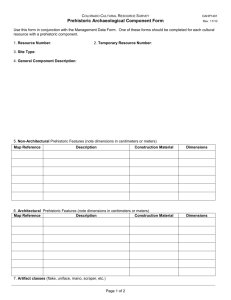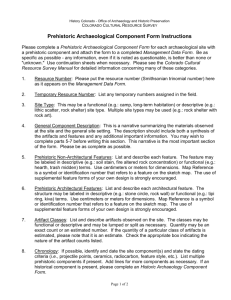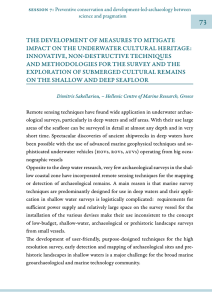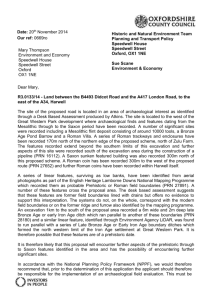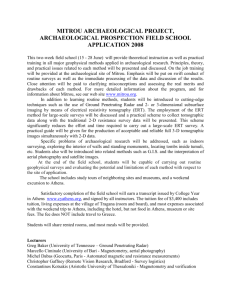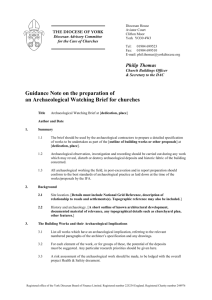Word 97/8.0 format
advertisement
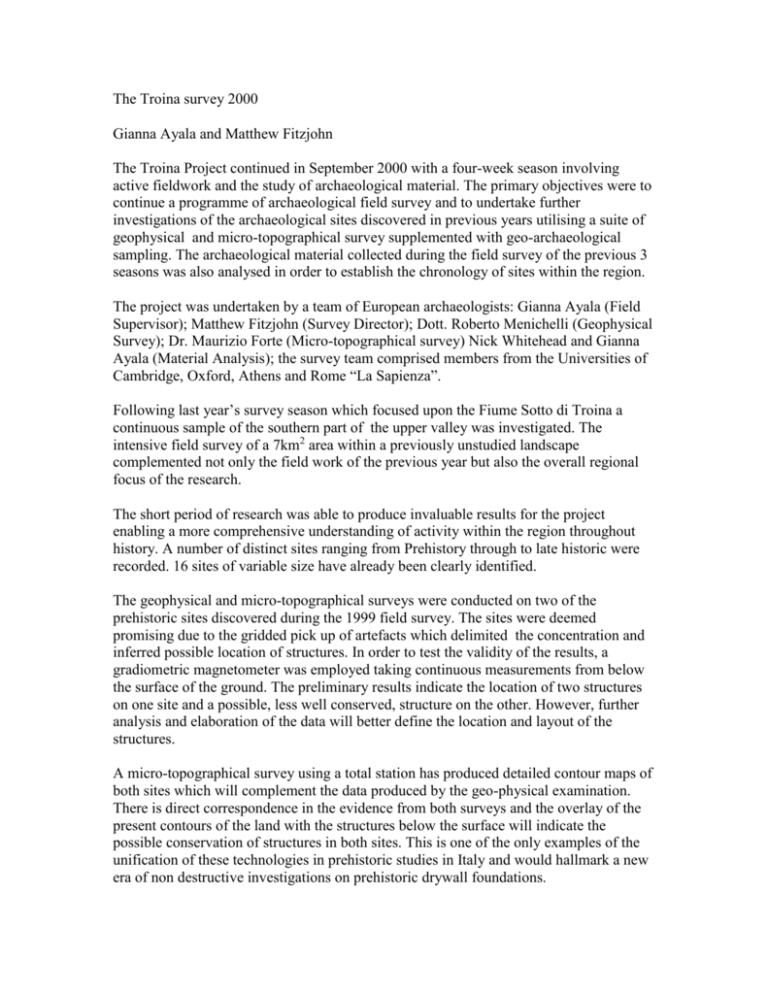
The Troina survey 2000 Gianna Ayala and Matthew Fitzjohn The Troina Project continued in September 2000 with a four-week season involving active fieldwork and the study of archaeological material. The primary objectives were to continue a programme of archaeological field survey and to undertake further investigations of the archaeological sites discovered in previous years utilising a suite of geophysical and micro-topographical survey supplemented with geo-archaeological sampling. The archaeological material collected during the field survey of the previous 3 seasons was also analysed in order to establish the chronology of sites within the region. The project was undertaken by a team of European archaeologists: Gianna Ayala (Field Supervisor); Matthew Fitzjohn (Survey Director); Dott. Roberto Menichelli (Geophysical Survey); Dr. Maurizio Forte (Micro-topographical survey) Nick Whitehead and Gianna Ayala (Material Analysis); the survey team comprised members from the Universities of Cambridge, Oxford, Athens and Rome “La Sapienza”. Following last year’s survey season which focused upon the Fiume Sotto di Troina a continuous sample of the southern part of the upper valley was investigated. The intensive field survey of a 7km2 area within a previously unstudied landscape complemented not only the field work of the previous year but also the overall regional focus of the research. The short period of research was able to produce invaluable results for the project enabling a more comprehensive understanding of activity within the region throughout history. A number of distinct sites ranging from Prehistory through to late historic were recorded. 16 sites of variable size have already been clearly identified. The geophysical and micro-topographical surveys were conducted on two of the prehistoric sites discovered during the 1999 field survey. The sites were deemed promising due to the gridded pick up of artefacts which delimited the concentration and inferred possible location of structures. In order to test the validity of the results, a gradiometric magnetometer was employed taking continuous measurements from below the surface of the ground. The preliminary results indicate the location of two structures on one site and a possible, less well conserved, structure on the other. However, further analysis and elaboration of the data will better define the location and layout of the structures. A micro-topographical survey using a total station has produced detailed contour maps of both sites which will complement the data produced by the geo-physical examination. There is direct correspondence in the evidence from both surveys and the overlay of the present contours of the land with the structures below the surface will indicate the possible conservation of structures in both sites. This is one of the only examples of the unification of these technologies in prehistoric studies in Italy and would hallmark a new era of non destructive investigations on prehistoric drywall foundations. To complete the investigation of these sites, they were both augered to identify the location and extent of archaeological deposits. In this way, the results of both surveys were tested and information as to its depth was recovered. Samples of these deposits were taken for micromorphological analysis in order to characterise the deposits and tie them in to the larger geoarchaeological research of the valley.
